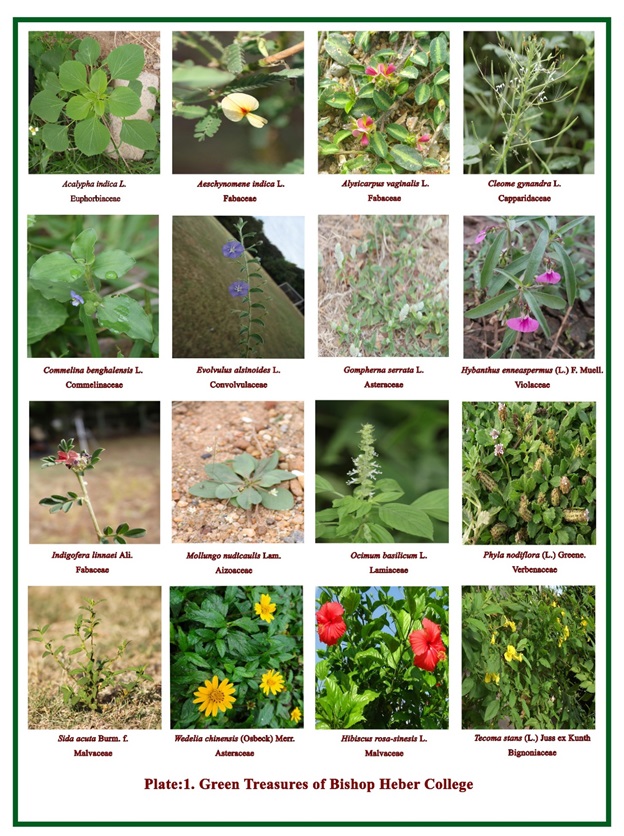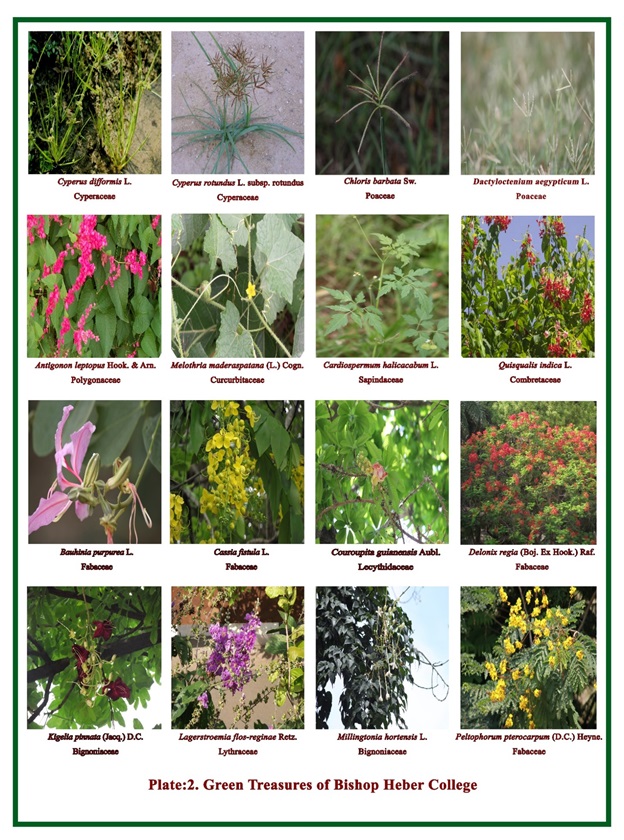Bishop Heber College fosters a sense of connectedness and ecological citizenship in responding to the environmental challenges while preparing the Students as environmental stewards of God’s creation. Realizing the God-given mandate to take care of the earth, the College with various Departments like Environmental Sciences and Biology continuously focuses on the mission to ensure Environmental Sustainability, Preservation and Restoration of nature.

The College campus which was built originally on the alluvial clayey soil where there used to be cultivation of Paddy and other agricultural crops over generations. The campus spreads across 23.5 acres of land area with the open green cover occupying 15.96 acres (nearly about 60% of the total area) and the remaining area is occupied by nearly 40 buildings intermingled with metal roads.
The procedures and policies for Environmental Consciousness in Bishop Heber College are enshrined in the following policies:
Solar: Solar energy is a clean and green energy and non-polluting. Sunlight, or solar energy, can be used directly for heating and lighting homes and businesses, for generating electricity, and for hot water heating, solar cooling, and a variety of other commercial, industrial and educational sector uses. Bishop Heber College (Autonomous), with an area of about 32 acres. It has a large area of buildings and all buildings have more laboratories and class rooms. The population of our college is around 13,000. The electricity is an important aspect in our campus. One of the most troubling issues of today is the rising cost of energy.


Biogas is produced after organic materials (Plant and Animal Products) are broken down by bacteria in an oxygen-free environment, a process called anaerobic digestion. Biogas systems use anaerobic digestion to recycle these organic materials, turning them into biogas, which contains both energy (Gas), and valuable soil products (Liquids and Solids). The procedures and policies for Environmental Consciousness in Bishop Heber College are enshrined in the following policies:
A biogas plant is constructed between the Gardiner hostel and the mess workers quarters of 238m3 capacity, which can utilize 600-700 kg of Night soil and 500 kg of food waste/day to produce 35-40 kg of biogas daily.
| Substance | Symbol | Percentage (%) |
|---|---|---|
| Methane | CH4 | 50 - 70 |
| Carbon Dioxide | CO2 | 30 - 40 |
| Hydrogen | H2 | 5 - 10 |
| Nitrogen | N2 | 1 - 2 |
| Water vapour | H2O | 0,3 |
| Hydrogen Sulphide | H2S | Traces |
Capacity:
Total Volume : 238 m
Gas Storage Volume : 63 m
Anaerobic Bacteria Volume : 175 m
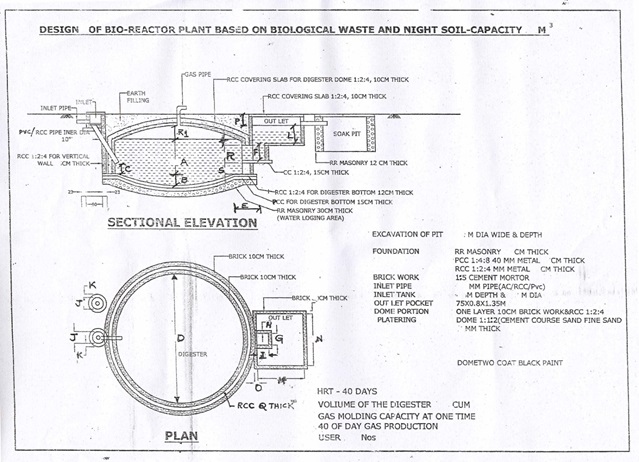
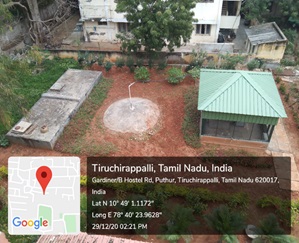
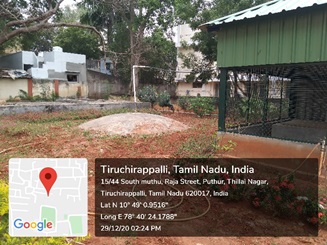
The Energy Audit Report of the College during the period 2019-20. The total consumption of electricity was 2,161,804 units. This includes air conditioners which consume about 20 - 24% of electricity. One electrical unit (EU) equals consumption of 1000 watts per hour (1kWh) and requires 0.538 kg or approximately ½ kg of coal to produce the same.
The total quantity of coal required to produce 2,161,804 units of electricity (2,161,804 × 0.538 kg coal) = 11, 63,050.55 kg or 1,163 tons. CO2 emission by coal for one kilogram of coal, emits 2.86 kg of CO2, thereby increasing the carbon footprint which in turn contributes to global warming.
Therefore, 155.86 tons of coal consumed indirectly by the Institution through consumption of 2,161,804 units of electricity led to the emission of (11,63,050.55kg of coal × 2.86 kg CO2) 3,326,323 kg or 3,326.3 tons of CO2 into the atmosphere.
The management of Bishop Heber College is conscious of this damage to the environment and has been implementing various programs/activities to reduce energy consumption on the one hand and increase green energy sources on the other.
They are
I. LED Lamps in the Campus The Institution has installed LED tube lights in the College campus. The power consumption and carbon footprint reduction are discussed below. Total units of electricity consumed by LED lamps = 1,12,400 units Coal equivalent of 12,400 units (1,12,400 × 0.538 kg coal) = 60,471.2 kg or 60.47 tons. 1 kg coal emits 2.86 kg CO2 into the atmosphere. At this rate, 56,564 kg coal emits (60,471.2 × 2.86) = 1,72, 947.6 kg or 172.94 tons of CO2.Which is 22% less by regular consumption by conventional devices.
II. Solar Energy Available in the Campus Solar energy is the most feasible and viable green energy available around the globe. Its viability is very high in tropical countries like India. Ten solar panels, each measuring 4 × 3 ft., were installed on the terrace of the college building where light intensity is very high. Each panel produces 180 W of electricity. However, the panels will function effectively only for about 10 months per year (300 days). Monsoon and clouds prevent sun’s rays for more than 2 months. At this rate net power generated by renewable energy resources:
Annual local power generated by renewable energy =3,360KWh
The segment 1.5 KVA array is grid tied will export 1.5 KVA X 80% X 10 hrs (per-day) X (280-180) =1,200 KWh at any instant if local consumption is zero. ( Export energy local power generation is calculated for non-working days only)
The total quantity of coal required to produce 1,200 units of electricity (1,200 × 0.538 kg coal) = 645.6 kg or .646 tons.
The CO2 equivalent is 645.6 × 2.86 = 1,846 kg. or 1.85 ton is reduced per annum.

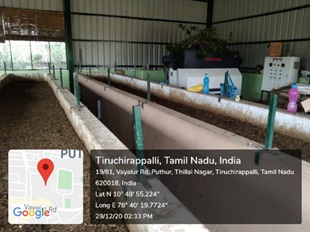
The green treasures which spreads across the campus is recorded with 167 genera of plants categorized into Herbs, Climbers, Grasses, Shrubs and Trees. Trees represented the highest number of genera with 74 followed by Herbs (59), Shrubs (4), Climbers (13) and Grasses with 17 species.
Though the tree population is lesser in number they contributed to the maximum diversity in terms of genus. This is due to the fact that the trees were planted all along the campus and also with the maintenance of Arboretum inside campus where nearly 25 genera are maintained.
The herbs that outnumber in terms of the population grow naturally all along the entire campus and with the well maintained aesthetic spots throughout the campus. The college strives its best to maintain the green cover in the campus through which the college gains its popular name “The Beauty Bishop”.
The college inculcates stewardship responsibility among the stakeholders through the following green initiatives: Rain water harvesting, Environmental education to school children, International students and to the local public by eco-tours, field trips and nature camps, bird watching, survey, rescue, breeding and release of orphaned or abandoned birds. Environmental awareness campaigns by observation of No Vehicle/Drive day, World Environment Day, Forest Day, Sparrow Day, Water and Earth Day. Tree planting, establishment and maintenance of nursery and issuance of saplings to different beneficiaries like NSS, NCC and other voluntary agencies as part of improving the green cover around the campus as regular and routine activities. Establishment of Arboretum, Ficadorium, Bambusetum and Medicinal plant garden for the purpose of education and creating awareness. Conservation of endangered and endemic plants from the ecologically sensitive Western Ghats Mountains (One of the Hot Spots of Biodiversity) is being undertaken using Micro propagation and other breeding methods.
